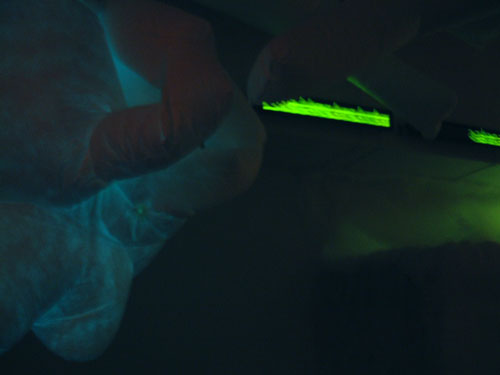Video

On January 25, 2023, in the Immucor gene research facility in West Essex New Jersey, a senior lab technician performed a then-standard experiment. The technician inserted genetic material from an Amazonian beetle into fertilized embryos of common sheep. The research facilities of the West Essex Immucor labs were kept highly sterile to prevent contamination of experiments. However, this practical matter was not 100 percent possible and in this particular instance the experiment was contaminated by mold spores that the technician had come into contact with while camping the previous weekend. The result was the creation of a rapidly mutating strain of virus, now called West Essex 6. The effect of the virus is to over take the hosts (humans) and, in a cancerous fashion, mutate living cells into an uncontrolled spore-pod-like growth. Those infected have a 72% recorded mortality rate. The Immucor lab was sealed on January 26 at 6:23pm by the CDC and remained under quarantine for six months, after which time the facility was burned to prevent spread of the virus. This is the first known example of a genetic disaster.
A New Type of Unfortunate Occurrence is interactive environment that
explores issues surrounding genetic research and its potentially disastrous
outcomes by Paul Davies, Leslie Clague, Jake Woland and Nick Chapman.
Humans are familiar with disaster; both natural (floods, earthquakes,
tornados, volcanoes) and synthetic (oil spills, chemical leaks, nuclear melt
downs). For the most part, we are accepting of disasters and view them as
more or less inevitable.
Some disasters are fast-burning and some are slow-burning. Most natural
disasters are fast burning. Consider a tornado: it comes, it is violent, the
destruction is quick, and when it is gone, the earth (and humans) can start
to put things back together almost immediately. Many human disasters are
more lingering; they burn slowly. Think of the nuclear disaster at Chernobyl
or the chemical pollution of the Love Canal. Those man-made disasters have a
lingering quality that can last years, or even decades. Other man-made
disasters have the potential to burn even slower and last for centuries,
like global warming or nuclear winter or permanent genetic changes to the
human species.
In the future there will be a new type of man-made disaster Ė a genetic
disaster. The first recorded genetic disaster hasnít occurred yet. But it
will Ė itís simply a matter of time. Genetic disasters will join the ranks
of other synthetic disasters and perhaps we will eventually view them as
more or less inevitable.
Eventually, this type of disaster, like chemical spills and train wrecks,
will simply be part of society and will be dealt with as a fact of life.
Just as we have become accustomed to the risks and costs of nuclear power
and atomic weapons, we will add in the risks and cost of genetic
engineering.
There are many complementary threads of scientific research, such as GM
foods, cloning, virus research, and the Genome project, whose combined
consequences are not known. For the most part, we are not in control of how
technology evolves our society. These changes will happen when they happen,
and the
world, for better or worse, will be a different place with a new type of
unfortunate occurrence.
Paul Davies, 2003
Opening Sat Dec 4th, 8pm at
The Tank NYC
450 West 42nd Street, New York, NY, 10036
212.563.6269
info@thetanknyc.org
Special opening night performances by Nick Chapman, liek twi and the mu ensemble and Damian Catera.




